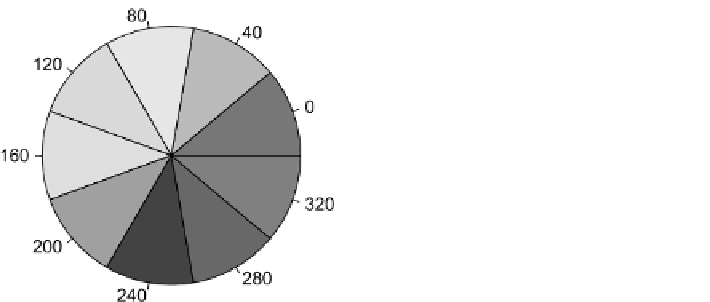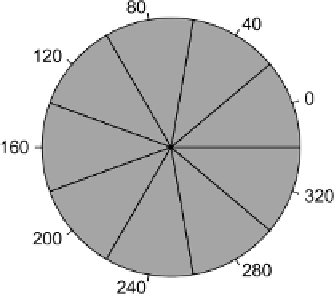Graphics Reference
In-Depth Information
Figure
.
.
[his figure also appears in the color insert.] Qualitative color palettes for the HSV (let)
and HCL (right) spaces. he HSV colors are
for the same
hues H. Note that in a monochrome version of this paper, all pies in the right wheel will be shaded with
the same gray, i.e., they will appear virtually identical
(
H,
,
)
and the HCL colors
(
H,
,
)
Figure
.
.
[his figure also appears in the color insert.] Diverging color palettes for the HSV space
(upper part)andtheHCLspace(lower part), ranging from blue to a neutral color to red. he triples
indicate the settings for the three dimensions: (hue, saturation, value) in the upper part, and (hue,
chroma, luminance) in the lower part. In a monochrome version of the paper, the right- and let-hand
sides of the HCL color palette will appear to be identical, unlike the HSV color palette
he use of colors that are more “in harmony” goes back to Munsell (
), who
introduced a notation for balanced colors. Based on those, tools producing better
palettes for specific tasks have been developed (Harrower and Brewer,
). Other
perceptually based color spaces, especially suited for computer displays, are the
CIELABandCIELUVspaces(Commission Internationale del'Éclairage,
)from
which qualitative palettes for statistical graphics have been derived (Ihaka,
).
A transformation of the CIELUV space leads to the HCL (hue-chroma-luminance)
space. hese colors are again specified by triplets
(
H, C, L
)
:chromaC loosely corre-












